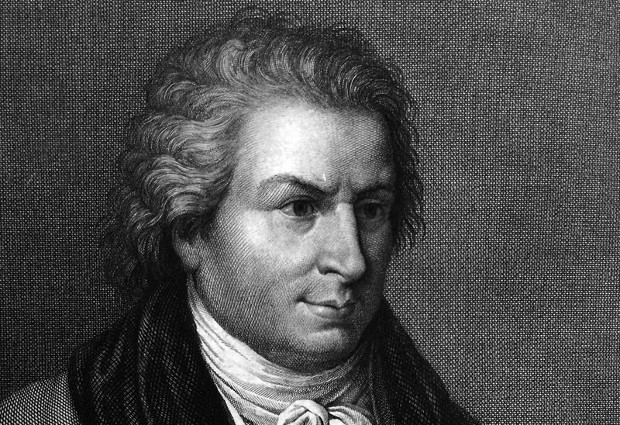
Giambattista Bodoni was an Italian graphic designer and typographer. He was also worked as type-designer, compositor, publisher and printer. His type designs were modeled after Pierre Simon Fournier’s typeface but later felt inspired by the typography of John Baskerville. With the help of an associate he evolved the type called ‘New Face’.
On February 16, 1740, Giambattista Bodoni was born at Saluzzo in Savoy. The printmaking skill ran in the family as his father and grandfather were in the same trade. For some time he worked as an apprentice in the Roman Catholic Church’s Propaganda Fide printing house. His superiors were highly impressed by his meticulous work and studiousness in mastery of ancient languages and types. That allowed him to produce his first book based on a version of the Tibetan alphabet, Coptic Missal. In the construction of pseudoclassical typefaces Bodoni became a chief figure.
Subsequent to Bodoni’s recuperation from malaria, the Duke Ferdinando of Bourbon-Parma sought his skills to mount a printing house in Parma, in 1768. The printing house was to be one of the greatest in Italy named la Stamperia Reale. His job entailed publicizing the house and for that purpose he created specimen book which resulted in success. His book titled Descrizione Delle Feste Celebrate In Parma L’Anno MDCCLXIX, was the first one in the long line of books he published. Shortly afterwards the publishing house began to produce the fine editions of classical and respected works, for instance, Gerusalemme Liberata of Torquato Tasso and Homer’s literary work. As result of these publications, Bodoni won the public’s favour and eventually opened his own publishing house called Officina Bodoni.
Minister Guillame du Tillot appointed Bodoni to train young minds in the art of printing and typemaking. He trained many amateur printers and among them The Amoretti Brothers became his best trainee. However, in 1791 they had an argument over the ownership of the famous Bodoni type. They argued to no avail and eventually the trainee left him in the pursuit of founding their own type-foundry. Despite the betrayal of his pupil, Bodoni continued to work rigorously and achieved an unprecedented level of technical refinement. His expertise enabled him to reproduce letterforms in a unique manner. He gained reputation for designing highly styled editions and pseudoclassical typefaces.
Bodoni’s typefaces reflected his aesthetic sense represented in the simple forms and plain style fused with the purity of materials. It was not possible for the other typographers to stay unimpressed by his typography. Soon, hordes of artists became his admirers and imitators and his popularity surpassed as of French typographers, including Pierre Simon Fournier and Philippe Grandjean. In his lifetime, Bodoni had personally engraved 298 typefaces. Moreover, as the manager of several publishing houses he had helped produced roughly twelve hundred fine editions. His notable publications of classic works include Horace, The Divine Comedy and Virgil. One of his famous text books, entitled Il Manuale tipografico (The Manual of Typography), was published posthumously by his widow in 1813. The book featured 373 characters which include 48 Oriental or exotic ones and 34 Greek.
According to an English textile designer William Morris, Bodoni epitomized the modern ugliness through his mechanical perfection in typography. Bodoni passed away in the November of 1813. Almost one and a half century later a museum was opened in Parma in honor of the artisan, named The Bodoni Museum.

